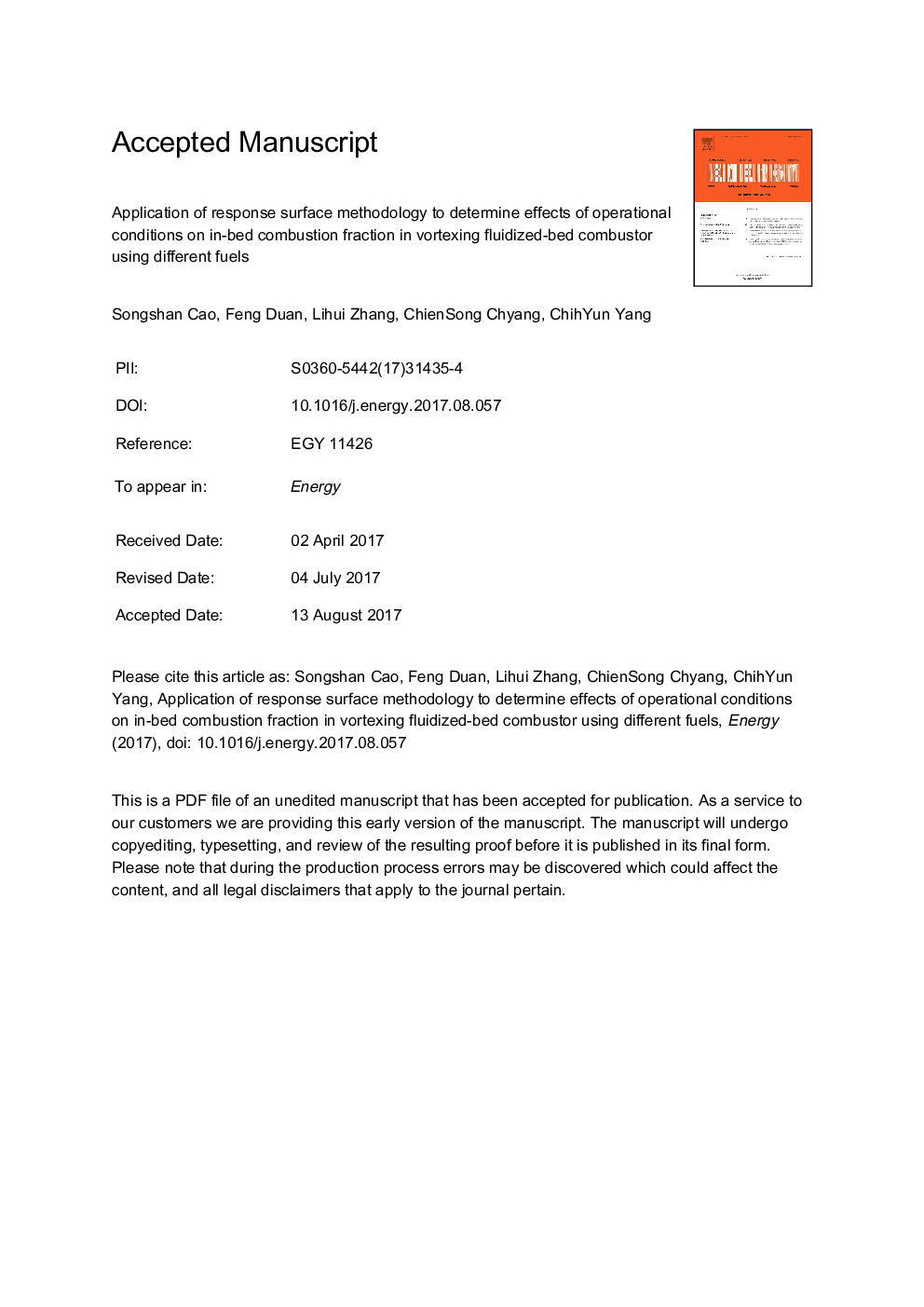| Article ID | Journal | Published Year | Pages | File Type |
|---|---|---|---|---|
| 5475643 | Energy | 2017 | 32 Pages |
Abstract
Distinct secondary gas injection modes of a vortexing fluidized-bed combustor (VFBC) affect combustion fraction distribution, resulting in different combustion and pollutant emissions characteristics. To determine the important operational conditions, correlations that consider most of the VFBC parameters were derived to predict the in-bed combustion fraction in VFBC. The predictions obtained using the regression correlation analysis were in good agreement with the results of present experiments and with previously published results. Response surface methodology (RSM) was used to analyze the sensitivity of different coded factors based on established model. A new correlation equation, with a fewer parameters, based on the sensitivity analysis, was also developed and exhibited a positive predictive accuracy. Results demonstrate that the primary gas ratio, particle size, and fuel type significantly affect the combustion fraction. The in-bed combustion fraction increases with increasing particle size, and decreases with increasing primary gas ratio and the ratio of volatile to fixed carbon.
Related Topics
Physical Sciences and Engineering
Energy
Energy (General)
Authors
Songshan Cao, Feng Duan, Lihui Zhang, ChienSong Chyang, ChihYun Yang,
